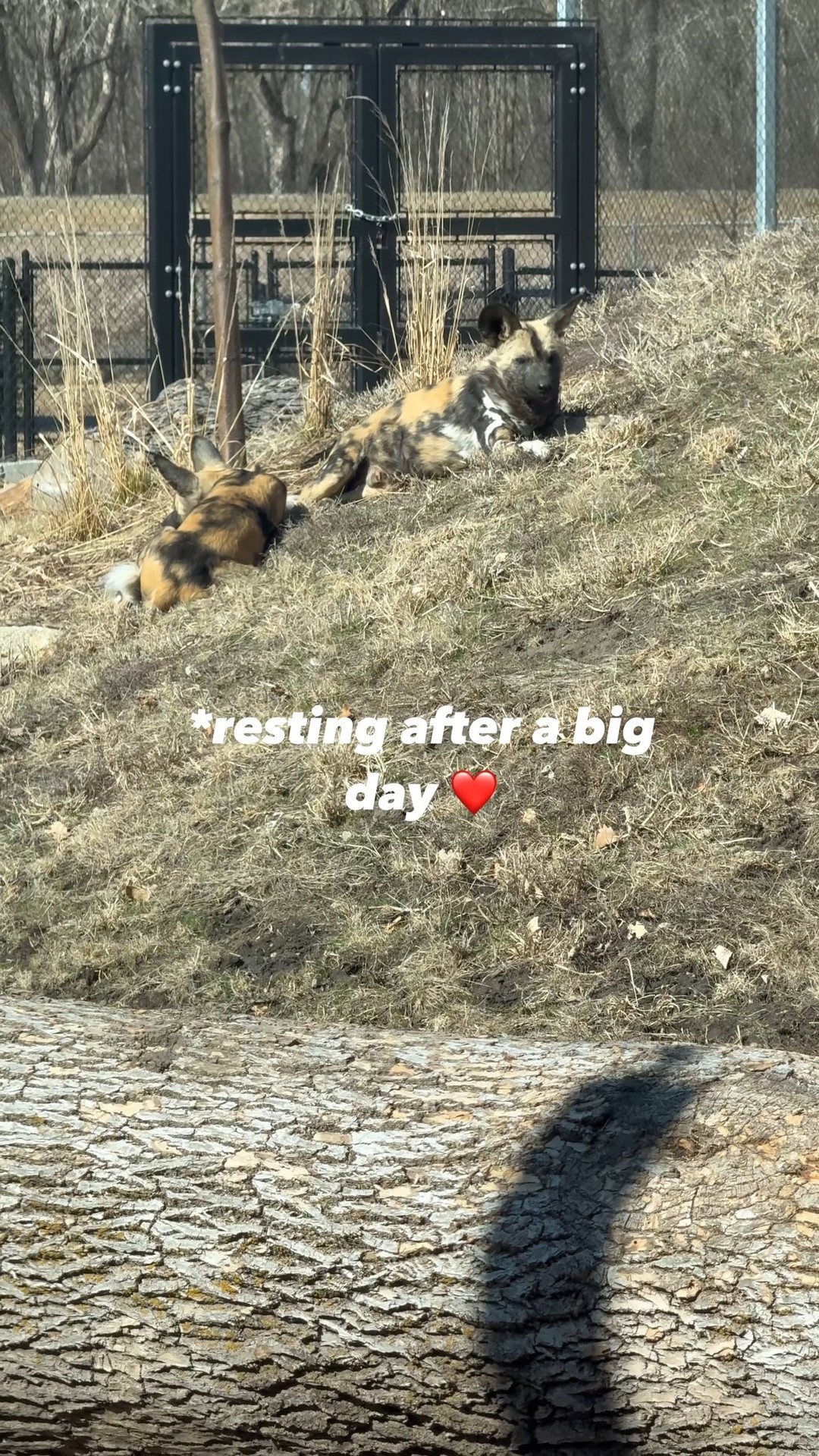- The movement of CJJ and Monkey Wrench from their old exhibit to a temporary habitat.
- The preparations and conditions established to facilitate a smooth transition for both the animals and the zookeepers.
- The altruistic decision to lend their original space to the American Red Wolves during the exhibit renovation.
- The role of dedicated zoo staff and the adaptive behavior of the painted dogs during the move.
- The opportunity for visitors to see the painted dogs in their new location and support conservation efforts.
The recent transition of CJJ and Monkey Wrench, the much-adored painted dogs, from their familiar habitat into a temporary new home is a testament to effective zoo management and devotion to animal welfare. As part of a broader effort to refurbish the current exhibit space, the zoo arranged for these animals to inhabit the lion exhibit temporarily. This significant move highlights not only the expertise in animal care but also the collaborative spirit necessary for nurturing environments in zoological parks.
The relocation process of wild animals, especially socially complex species like painted dogs, involves considerable planning. It begins with an assessment of the new temporary habitat to ensure it sufficiently mimics key aspects of the animals’ natural environment. In this case, the lion exhibit was outfitted with the necessary enrichments such as varied terrain, plenty of shade, and mental stimulation features to make the painted dogs feel at ease. These acclimatizations are essential, as painted dogs are highly intelligent and social animals that thrive in dynamic environments.
Moving into the lion exhibit also required behavioral studies and health evaluations to anticipate how CJJ and Monkey Wrench might respond to their new setting and to ensure their continued well-being. Painted dogs are known for their social structure and interactions; therefore, understanding their dynamics is vital for a successful transition. The zoo staff meticulously monitored the dogs’ behavior to verify they recognized and adapted to the new environment without stress-related concerns.
An interesting facet of this move is the painted dogs’ willingness to lend their original space to the American Red Wolves while their exhibit is undergoing a much-needed facelift. This gesture is part of a larger conservation initiative aimed at highlighting and preserving endangered species. The American Red Wolves, like painted dogs, are carnivorous animals close to nature, and therefore, they benefit significantly from having an enriched and expansive exhibit. The synergy between species dedication and zoo operations illustrates an effective cooperation toward broader conservation endeavors.
Essential contributors to the success of such initiatives are the zoo staff members who work tirelessly. The zookeepers, facilities personnel, and animal behaviorists all play crucial roles in managing these transitions. They are responsible not only for physical relocation but also for the emotional and psychological welfare of the animals. The keepers’ familiarity with CJJ and Monkey Wrench’s behavioral and dietary patterns enabled them to predict and prevent potential issues during this transition.
Additionally, the behavior of the painted dogs themselves was a critical factor in ensuring a seamless move. Known for their social order and adaptive nature, these animals were carefully observed for any signs of anxiety or discomfort. Enrichment activities and positive reinforcement helped them settle into their new habitat quickly. This transition exemplifies how communication and trust between animals and their caregivers are paramount to effective wildlife management.
Visitors have an extraordinary opportunity this spring and summer to observe the painted dogs in their temporary enclosure. Engaging with animals in a zoo setting offers educational benefits, fostering a greater awareness and appreciation for wildlife conservation. This fresh perspective of CJJ and Monkey Wrench’s temporary home can aid visitors in understanding the importance of habitat enrichment and the meticulous care given to ensure animal welfare.
Viewing the painted dogs in their new habitat will not only captivate attendees but also support ongoing conservation efforts. Tickets sold for zoo visits often contribute directly to funding for endangered species programs, habitat preservation, and educational outreach about wildlife conservation. By visiting CJJ and Monkey Wrench in their temporary home, patrons support meaningful efforts in conserving not only painted dogs but also other vulnerable wildlife.
Through this thoughtful relocation and exhibit refurbishment, the zoo celebrates its commitment to conservation, education, and the well-being of its inhabitants. This move illustrates the complexities of animals’ environmental needs and how zoos can innovate to maintain both species diversity and engagement with the public. The journey of CJJ and Monkey Wrench continues to educate, inspire, and support wildlife conservation in tangible, impactful ways.
*****
Source Description
🚨 Big move alert! 🚨 Take a look at how we moved CJJ & Monkey Wrench into their temporary new home—the lion exhibit!
They’re lending their space to our American Red Wolves while their exhibit gets a makeover (talk about generous hosts! 😉).
Huge thanks to our hardworking zookeepers, facilities staff, and of course, the painted dogs for making this move a breeze!
Come see the boys in their new digs this spring & summer!
Get your tickets at the link in our bio!
.
.
.


